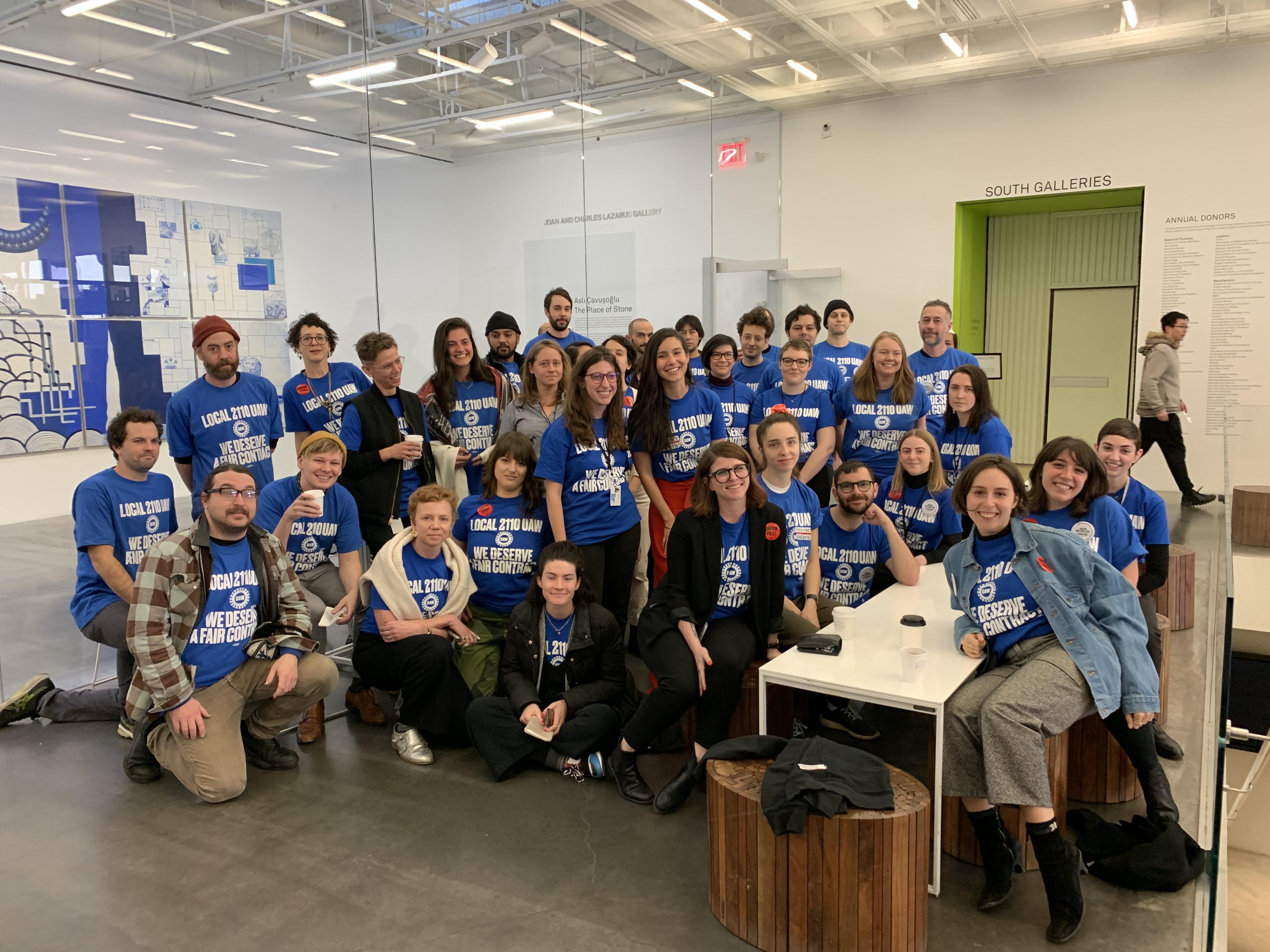
This morning, more than 40 staffers at the New Museum gathered in its lobby, clad in bright blue union t-shirts to publicly demonstrate their collective desire to join UAW Local 2110. It was a brief action, but represented a significant first step toward reaching solidarity among the museum’s 74-person bargaining unit.
“We wanted to come together just for a few minutes and show our solidarity and show museum management that this is not just a handful of radicals,” Dana Kopel, a senior editor and publications coordinator at the museum and a member of the union organizing committee, told artnet News. “This is something that has really broad, strong support across the museum.”
Starting at 11 a.m. to coincide with the art handlers’ scheduled breaks, the group gathered in the cafe seating area wearing their matching shirts for the proposed Local 2110 chapter NewMuU-UAW, bearing the union seal and message “we deserve a fair contract.”
The goal of the demonstration was to “open the lines of communication,” said Alicia Graziano, who works in the membership department at the museum and is also on the organizing committee. “Putting a face to this campaign, we hope we will be able to discuss [unionizing] with management in an open and honest way.”
The bargaining unit has sent a letter to the Labor Relations Board calling for a vote on January 17.
So far, the museum has not responded positively to calls for unionization, employing the company Adams Nash Haskell & Sheridan to discourage workers from joining the collective bargaining unit.
“The communication we’ve gotten has been almost exclusively through this union-busting consulting firm that they’ve hired,” Kopel claimed. “They’ve been extremely anti-union in their presentations, which we’ve been required to sit through.”
The New Museum. Photo courtesy of the New Museum.
The organizing committee wants to counteract what they considered biased and untrue information from the firm. “My parents are both in a union, and I know I benefited from that,” said Graziano.
Staff members are looking to improve compensation, which can be as low as $35,000 a year for a full-time employment. “In some cases, people really can’t live on the salaries they’re making,” Kopel said. She also claimed that certain departments illegally discourage employees from recording their hours when they make less than $58,500 a year and are therefore eligible for overtime when they work more than 40 hours per week.
“This has been a labor of love,” said Graziano. “We care about this institution and its mission, and we also care about each other. This whole process of unionization has built some really strong bonds among our colleagues, and it has been a really inspiring process.”
Marcia Tucker, who founded the New Museum in 1977, “had really radical ideas for what a museum could be and do. She initially envisioned that everyone would be paid the same amount no matter their job, and they would rotate positions within the museum so everyone would get a sense of everything,” added Kopel. She said that the push to unionize “really comes from an understanding and care for the history of the museum and why it was founded.”